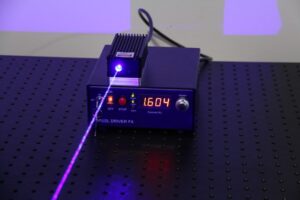

To be more precise, compared to the holmium laser system that used 200-μm to 365-μm optical fibers, the super pulsed fiber laser enables the application of 150-μm core-sized optical fibers. The researchers demonstrate “a comparison of lithotripsy with 242-μm core-sized optical fiber holmium: YAG (AccuMax 200), to the 150-μm core-sized SPTF.”
The thulium fiber laser platform provides a benefit compared to the holmium: it has a compact size and can be plugged into a 120-volt outlet as a standard mobile phone. Another benefit of fiber laser technology includes the absence of noise. Herewith, the super pulsed laser system provides settings that the holmium does not, containing high-frequency settings up to 2400 Hz. Therefore, the fiber laser system allows dusting or fragmenting kidney stones.
The fiber laser technology provides high efficiency in stone treatment due to the high absorption of the laser beam energy by water. “The laser beam energy is emitted at a wavelength of 1,940 nm, which is at the tip of the curve for water absorption. For that reason, it is probably more effective than the holmium laser system.” Also, the small profile of the laser beam generated by the super pulsed fiber laser makes it possible to use smaller optical fibers—as low as 50 μm, based on bench testing while holmium laser systems use fibers greater than 200 μm.
Consequently, the application of smaller optical fibers ensures three other benefits. The first is smaller fibers provide a better flexion to direct the system inside the kidney easier. Additionally, smaller optical fibers have better irrigation during the procedure with a better visualization. The third benefit includes the delivery of laser beam energy in a smaller area of the stone, producing fragments that are smaller dust-type fragments. Thus, virtually all patients with kidney stones who can be treated with the fiber laser system would benefit from fiber laser technology.
Finally, the super pulsed fiber laser is planned to be applied for a retrograde technique in patients that have larger stones that cannot be exposed to the percutaneous approach for reasons such as other comorbidities because it has the potential to be faster in terms of breaking up the stones.
Optromix is a fast-growing fiber laser manufacturer and a vendor of optical fiber sensors and optical monitoring systems. The company offers fast turnkey solutions and creates sophisticated fiber laser systems for special purposes. Optromix uses only its technologies and develops a broad variety of fiber lasers. If you have any questions or would like to buy a laser system, please contact us at info@optromix.com

